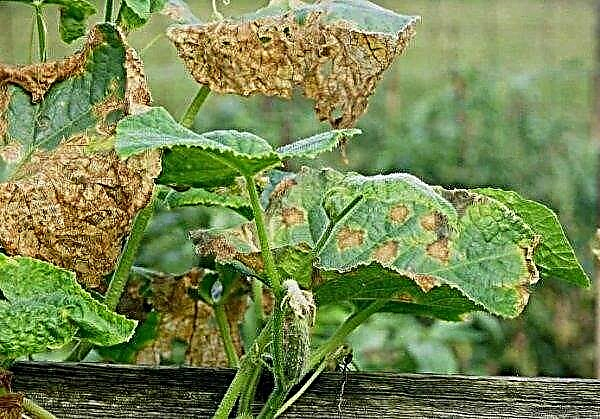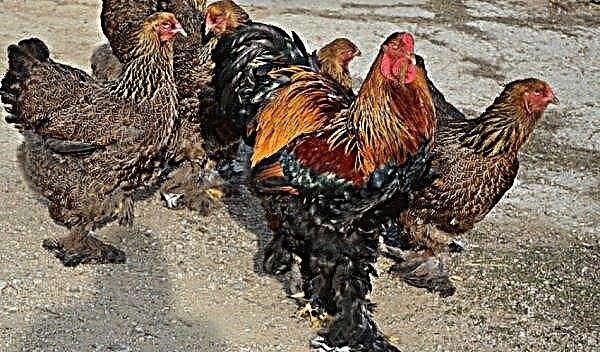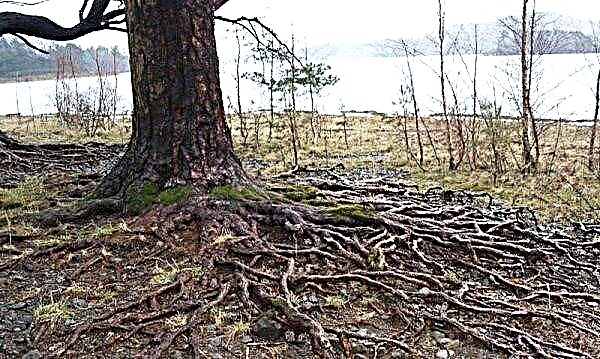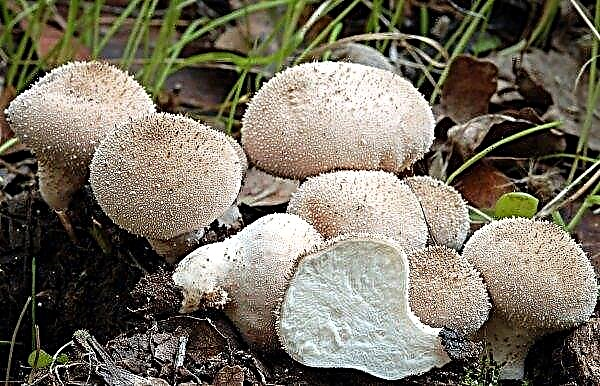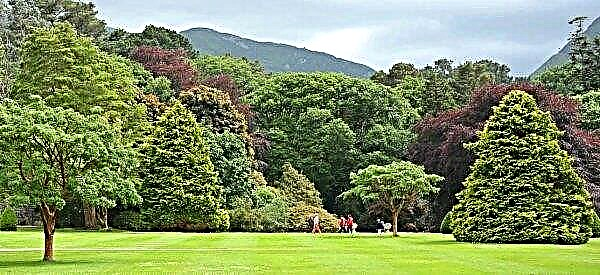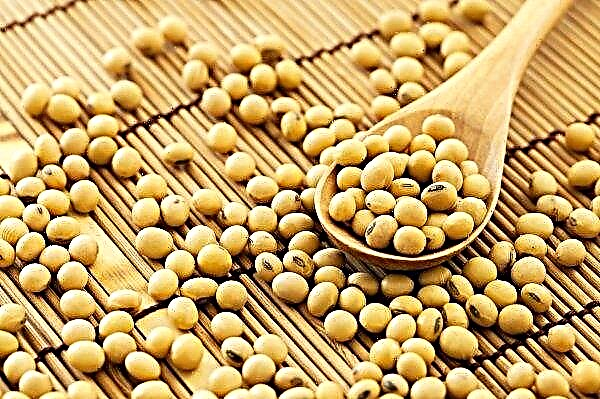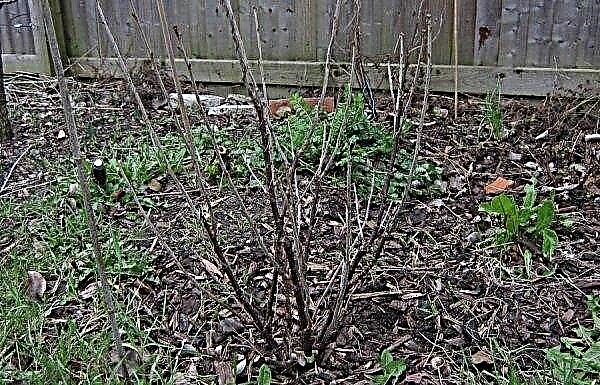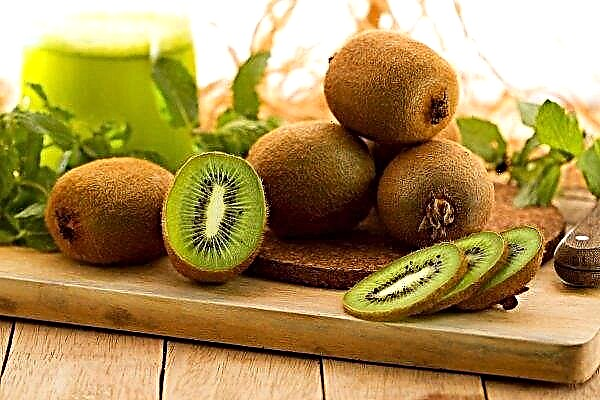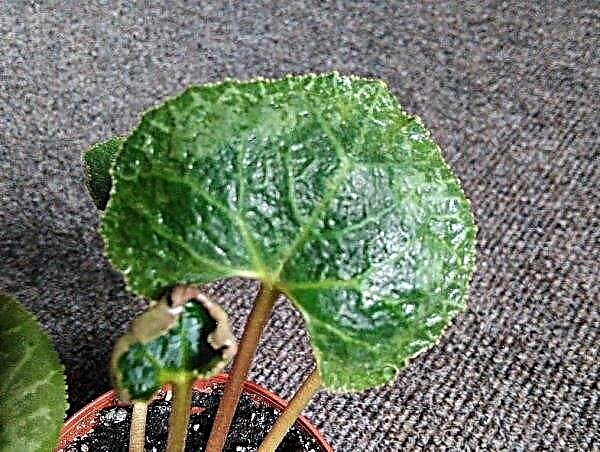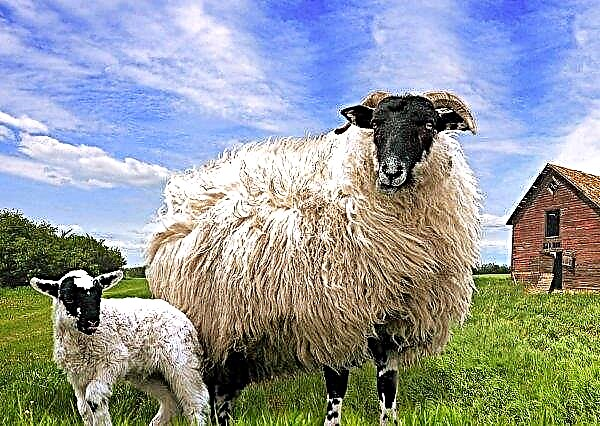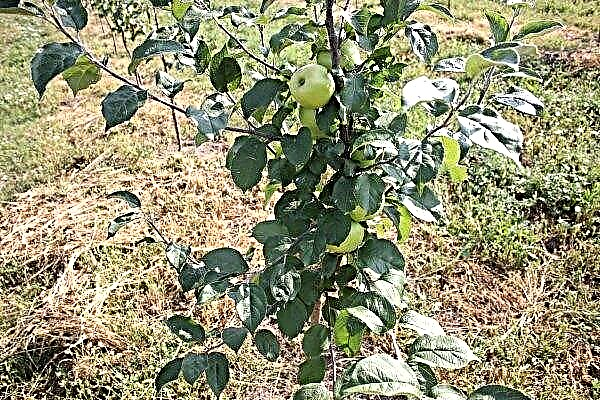Chickpeas, or, as it is also called, Turkish peas, are very often confused with sowing peas: both of these crops belong to the same Bean family and have some similarities in appearance. However, almost all common signs end there, since these cultures have different taste qualities, calorie content and chemical composition. Consider below the main features of both plants in order to easily distinguish them from each other in the future.
The main differences between chickpeas and peas
Despite the visible common features of the two cultures, chickpeas and peas, in addition to differences in taste, have little in common in other areas. Below is a table with the main differences between the two plants.
Did you know? In eastern countries, chickpeas are called "golden grain" — people believe that with daily use it is able to heal from any disease.
Chickpea Feature:
- It differs in round short pods, in which there are on average 2–4 grains;
- The standard color of the seeds is yellow;
- The composition contains a large amount of protein and carbohydrates, as well as fat;
- It grows in the warm climate of the southern latitudes;
- It is most often used in dishes of Indian cuisine, Eastern countries and in the Mediterranean countries.
Pea Characteristic:
- It is characterized by long beans, in which there are a large number of peas;
- Green colour;
- Peas are low in fat and moderate in protein and carbohydrates;
- Gives a good crop in a temperate climate;
- It is used in the cuisine of European countries and in America.
External difference
Chickpeas it is a leguminous annual plant on which short convex pods grow — it contains about 2–4 grains with a rough surface and a shape resembling a ram’s head with a bird’s beak. Depending on the place of cultivation, the color of peas can vary somewhat - from yellow to green or brown, but varieties with white seeds are usually eaten.
Learn more

Central Asia is considered to be the historical homeland of chickpeas, but this culture is also widespread in the territories of India, Central Asia, countries of Eastern Europe and East Africa, as well as in the Mediterranean regions.
Peas It is a one-year self-pollinating culture that produces fruits in the form of long medium-sized beans that contain, in comparison with chickpeas, a larger number of grains - from 4 to 10 seeds. The shape and color of peas may vary slightly depending on the variety, however, standard grains differ in a round shape and green color.
The pea stalk is branched, its length can reach 2.5 m. The foliage of the plant is complex in shape, unpaired, has small antennae at the ends, which, clinging, can hold the bush in an upright position. The homeland of peas is the territory of South-West Asia.

Chemical composition
The chemical composition of lamb peas (chickpeas) and ordinary also varies in their percentage.
Vitamins contained in chickpea:
| A (3 mcg) | It is an antioxidant necessary for the normal functioning of the organs of vision, bone health, skin, hair and stable immunity; |
| Beta Carotene (4 mcg) | In addition to the properties of vitamin A, this element has antioxidant properties and can also prevent the development of cancer. |
| E (0.8 g) | Stabilizes the activity of the cardiovascular system, increases the rate of elimination of toxins and positively affects the condition of the skin |
| K (9 mcg) | Increases blood coagulation |
| C (4 mg) | Antioxidant that strengthens the immune system, accelerates wound healing, normalizes metabolism and the removal of toxins from the body |
| Vitamin B group - B1 (0.5 mg), B2 (0.2 mg), B3 (1.5 mg), B4 (99.3 mg), B5 (1.6 mg), B9 (557 mcg) | Participate in the normalization of the nervous and cardiovascular systems, affect the digestive tract, improve the condition of the skin and hair |

In addition to vitamins, chickpeas are rich in macro- and microelements, such as:
| Ca (calcium) | 57 mg |
| Fe (iron) | 4.3 mg |
| M (magnesium) | 79 mg |
| P (phosphorus) | 252 mg |
| K (potassium) | 718 mg |
| Na (sodium) | 24 mg |
| Zn (zinc) | 2.8 mg |
| Cu (copper | 0.7 mg |
| Mn (Manganese) | 21.3 mg |
Did you know? According to legend, peas — these are the tears of Adam, who reproached himself for his dishonest act, which led him to expulsion from paradise.
The vitamins and minerals in peas are the same, but the percentage composition is slightly different
Vitamins:
- A - 7 mcg;
- Beta-carotene - 89 mcg;
- E - 0.1 mg;
- K - 14.5 μg;
- C - 1.8 mcg;
- B1 (0.7 mg), B2 (0.2 mg), B3 (2.9 mg), B4 (95.5 mg), B5 (1.8 mg), B6 (0.2 mg), B9 ( 274 mg).

Macro and microelements:
| Ca (calcium) | 37 mg |
| Fe (iron) | 4.8 mg |
| M (magnesium) | 49 mg |
| P (phosphorus | 321 mg |
| K (potassium) | 823 mg |
| Na (sodium) | 15 mg |
| Zn (zinc) | 3.6 mg |
| Cu (copper) | 0.8 mg |
| Mn (Manganese) | 1.2 mg |
| Se (selenium) | 4.1 mcg |
Calories
Check out

The amount of proteins in the same volume is 20.47 g, which corresponds to 27% of the daily norm, and fat - 6.04 g (7% of the norm). In addition, chickpeas contain water - 7.86 g, and ash - 2.85 g.
Total Content:
- sugar - 10.7 g;
- starch - not found;
- fiber - 12.2 g;
- trans fats and cholesterol are absent.
Using a portion of peas equal to 100 g, the human body receives 63.7% of carbohydrates, which is 71% of energy, or 255 kcal. The content of BJU in the same volume is 1.16 g of fat, 23.82 proteins. In addition, water in peas is 8.62 g, and ash is 2.66 g.
Total Content:
- sugar - 8 g;
- fiber - 25.5 g;
- cholesterol and trans fats are not identified.
By methods and time of preparation
Both chickpeas and peas are universally used in various dishes of complex and simple preparation: these healthy products are boiled, stewed, put in soups and more. Turkish beans are also used to neutralize the taste of too spicy or sweet dishes, they are fried, mashed and even ground into flour for the further preparation of baking or sweets.
Important! The proportion of peas and water when soaking is 1: 3, chickpea - 1: 4.
The main distinguishing feature of these crops is the preliminary preparation of grains:
- Peas require prolonged soaking before cooking (at least 6 hours), which significantly reduces the time of its preparation (up to 30-40 minutes). In the case of using dry grains, the cooking time increases to 1.5–2 hours.
- Chickpeas have the ability to absorb water, and therefore prolonged soaking will only spoil the taste and quality of this product. The optimal time is not more than 3-4 hours. After soaking, the cooking time is about 30-40 minutes, while when cooking or stewing dry chickpeas, this procedure can take up to 1.5 hours.

On the benefits and digestibility
The introduction of Turkish bean into the daily diet is recommended by many doctors and nutritionists, because its beneficial properties, high digestibility and low calorie have the following positive effect on the body.
- pros
- Lowers cholesterol and normalizes blood pressure - thanks to the methionine contained in beans, the liver and the overall condition of the vessels improve.
- Regulates the functioning of the food system - fiber cleanses the intestines and prevents the formation of constipation.
- Improves bone health - vitamins and trace elements support bone strength and prevent fractures.
- Controls blood sugar - chickpeas have a good effect on the health status of people suffering from diabetes.
- Increases brain activity and normalizes the nervous system - this effect is achieved due to the high content of manganese and selenium.
- It maintains optimal weight and prolongs the youth of the body - the presence of insoluble fiber in the chickpea gives a feeling of fullness and relieves hunger.

Peas are also of high value for the body and positively affect many of its systems - this is primarily due to the high content of protein, which in grains is the same as in beef.
- Useful properties of peas:
- The composition contains the substance lysine, which has powerful antiviral properties.
- Beans of this culture act as a shield that can prevent the entry of radioactive elements into the body.
- The high content of vitamins, micro and macro elements in grains allows normalizing the cardiovascular system, and prevents the development of hypertension and vasospasm.
- It positively affects the brain activity of a person, and also helps to cleanse the intestines from various toxins.
- The product is often administered with various diets - for example, to lose weight, speed up metabolism and gain muscle mass.
- Peas are also useful for the male body, as it is a means of getting rid of prostatitis.
Important! For the treatment of many diseases, not only pea itself, but also its tops are used — for example, a decoction of tops is used to dissolve kidney stones.
Harmful properties
Both chickpeas and peas have some contraindications in use.
- For turkish beans this is:
- individual intolerance to the body;
- gastrointestinal tract diseases, intestinal disorders or dysbiosis, as beans cause increased gas formation.

- For peas:
- inflammation of the kidneys (nephritis), inflammation of the gallbladder (cholecystitis), joint disease (gout, arthritis), inflammation of the walls of the veins (thrombophlebitis) - this is due to the presence of uric acid in the composition, which leads to the accumulation of salts in the joints and urinary system;
- gastrointestinal diseases - beans cause increased gas formation and fermentation processes in the intestine;
- allergy.
Despite the many differences between the two crops - peas and chickpeas, these products are of great benefit to the adult. The introduction of these beans into the daily diet will allow you to get rid of many diseases and prevent them, maintain health and youth. However, in everything you should know the measure, and it is also important to carefully read all the contraindications for the use of these legumes in advance.

